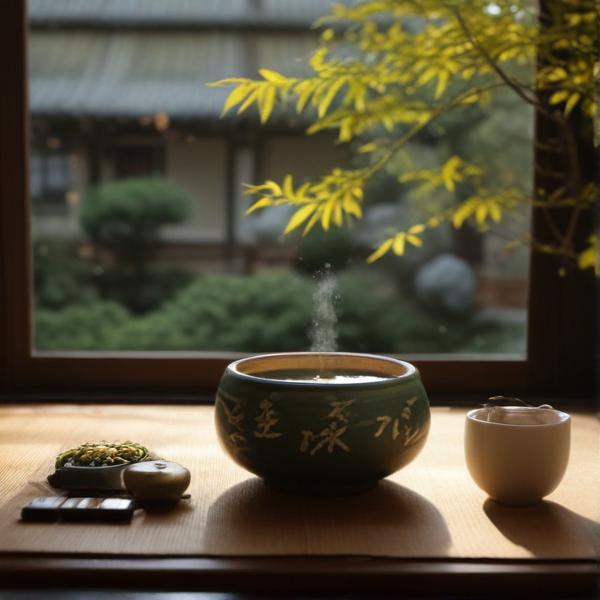基本信息 (Basic Information)
含义与用法 (Meanings & Usage)
中文核心释义 (Core Chinese Meaning): 茶,一种用来泡水饮用的植物叶子,也指由其制成的饮料。
英文核心释义 (Core English Meaning): Tea, the leaves used for brewing a beverage, and the beverage itself.
象形意义 / 为何这么写 (Pictographic Meaning / Writing Rationale)
文言文释义 (Classical Chinese Meaning)
文言文中“茶”与现代意义相近,主要指茶叶及由其制成的饮品。Similar to modern meaning; mainly refers to tea leaves and the beverage in Classical Chinese.
深入学习 (In-depth Study)
字源故事 (Origin Story)
字形演变 (Character Evolution)
常用词语和例句 (Common Words & Examples)
茶叶 (tea leaves)
中国的茶叶种类繁多,品质优良。
Eng: China has a wide variety of tea leaves with excellent quality.
茶馆 (teahouse)
他喜欢在茶馆里跟朋友聊天。
Eng: He likes to chat with friends in the teahouse.
喝茶 (to drink tea)
每天早晨我都习惯喝茶。
Eng: I am used to drinking tea every morning.
茶杯 (teacup)
她不小心打碎了一个茶杯。
Eng: She accidentally broke a teacup.
相关成语 (Related Idioms)
茶余饭后
Meaning: leisure time after meals; during free time
以茶会友
Meaning: making friends through tea gatherings
多语言翻译 (核心释义) (Translations (Core Meaning))
- French: thé
- German: Tee
- Spanish: té
- Italian: tè
- Portuguese: chá
- Russian: чай
- Arabic: شاي
- Persian: چای
- Dutch: thee
- Polish: herbata
- Vietnamese: trà
- Ukrainian: чай
视频学习资源 (Video Learning Resources)
通过以下链接在热门视频网站搜索 "茶" 的更多讲解:
Search for more explanations of "茶" on popular video sites:
- 在 Bilibili.com 搜索 "茶 字源 说文解字" (Search on Bilibili)
- 在 YouTube.com 搜索 "茶 character origin etymology" (Search on YouTube)
网络参考 (Web References for "茶") ()
网络内容摘要 (Web Content Summary):
茶字的核心含义是指茶叶或用茶树叶子加工的饮料,是中国传统文化的重要象征。“茶” mainly refers to tea leaves or the beverage made from them, and is a key symbol in Chinese traditional culture.
“茶”最初写作“荼”,但“荼”在古代也指苦菜等其他植物。到中唐时期,去掉一横的“茶”字才专指今天我们说的茶叶,历史文献如《康熙字典》、《正字通》中对此有描述。Originally, “茶” was written as “荼”, but in ancient times, “荼” could also mean other bitter plants. Around the middle Tang dynasty, the simplified form “茶” began to exclusively mean tea as we understand today, as described in historical references like the "Kangxi Dictionary".
-
常见的相关词汇有:喝茶(drink tea)、茶叶(tea leaves)、茶馆(teahouse)等。 Common related words include: 喝茶 (drink tea), 茶叶 (tea leaves), 茶馆 (teahouse), etc.
-
易混淆点在于古籍中“荼”字的多义,学习时请注意分辨。 A possible confusion arises because “荼” historically had various meanings; be careful to distinguish them when reading ancient texts.
因信息有限,目前未能查到明显相关的成语;如需成语或更丰富例句,建议参考现代汉语辞典等资料。Due to limited information, there are no clear idioms provided here; for more idioms or example sentences, consult modern Chinese dictionaries.
茶经述评之"茶"字的字源 - 知乎 - 知乎专栏
编辑/巴蜀茗人 排版/巴蜀茗人 图/网络 "茶"字的来源,大都认为中唐(约公元8世纪)以前表示"茶"的字,就是"荼"字。 "荼"字最早见于《诗经》,但《诗经》在不少诗篇中所说的"荼",并不是茶。开始以"荼"…
汉字"茶"之源及茶文化-中英古籍善本研究院(庫巴)
于是,比"荼"字少一横的"茶"字便应运而生。《康熙字典》援引《正字通》曰:" 茶之始,其字爲荼 ,如《春秋》齊荼、《漢志》荼陵之類。陸、顏諸人,雖已轉入茶音,未嘗輒攺字文。 惟陸羽、盧仝以後,則遂易荼爲茶。
更多图片 (茶 More Images) ()
